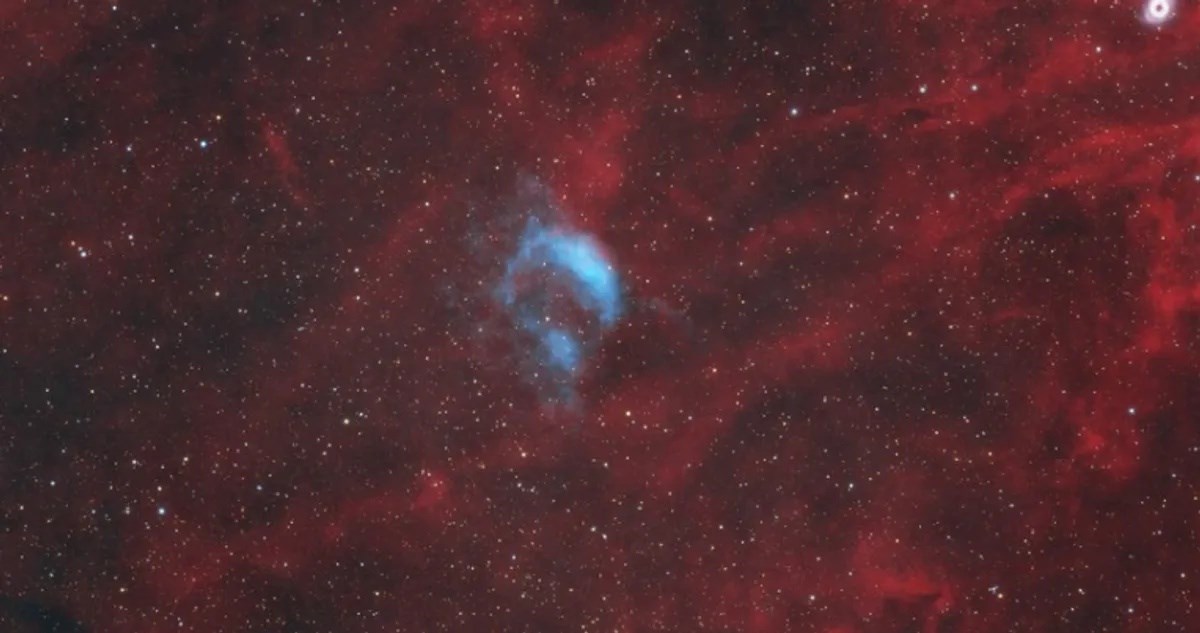[{“available”:true,”c_guid”:”b21f2152-a7c4-4de7-8a84-f15f351e4de9″,”c_author”:”hvg.hu”,”category”:”gazdasag”,”description”:”Bár az államháztartásnak egyértelműen jól jönne, a pénzügyminiszter szerint nem kívánnak menet közben belenyúlni az állampapírok kondícióiba.”,”shortLead”:”Bár az államháztartásnak egyértelműen jól jönne, a pénzügyminiszter szerint nem kívánnak menet közben belenyúlni…”,”id”:”20231128_Varga_Mihaly_a_tortenelmi_hagyomanyokra_hivatkozva_tett_igeretet_az_allampapirtulajdonosknak”,”image”:”https://api.hvg.hu/Img/ffdb5e3a-e632-4abc-b367-3d9b3bb5573b/b21f2152-a7c4-4de7-8a84-f15f351e4de9.jpg”,”index”:0,”item”:”49ab278e-2980-421f-aef0-fc4bb5ddab36″,”keywords”:null,”link”:”/gazdasag/20231128_Varga_Mihaly_a_tortenelmi_hagyomanyokra_hivatkozva_tett_igeretet_az_allampapirtulajdonosknak”,”timestamp”:”2023. november. 28. 13:38″,”title”:”A furcsa mai hírek után Varga Mihály gyorsan ígéretet tett az állampapír-tulajdonosoknak”,”trackingCode”:”RELATED”,”c_isbrandchannel”:false,”c_isbrandcontent”:false,”c_isbrandstory”:false,”c_isbrandcontentorbrandstory”:false,”c_isbranded”:false,”c_ishvg360article”:false,”c_partnername”:null,”c_partnerlogo”:”00000000-0000-0000-0000-000000000000″,”c_partnertag”:null},{“available”:true,”c_guid”:”e7cccfe9-a92d-4a6b-80f5-b15a458c02c3″,”c_author”:”MTI”,”category”:”gazdasag”,”description”:”A Kereszténydemokrata Néppárt javaslatára átkerülne a döntés a munkavállalók kezébe, ha a parlament is megszavazza. “,”shortLead”:”A Kereszténydemokrata Néppárt javaslatára átkerülne a döntés a munkavállalók kezébe, ha a parlament is megszavazza. “,”id”:”20231128_Januartol_a_szulok_donthetnenek_a_gyerekek_utan_jaro_potszabadsagrol”,”image”:”https://api.hvg.hu/Img/ffdb5e3a-e632-4abc-b367-3d9b3bb5573b/e7cccfe9-a92d-4a6b-80f5-b15a458c02c3.jpg”,”index”:0,”item”:”536a2a5a-9088-44c4-93c2-f9579170032d”,”keywords”:null,”link”:”/gazdasag/20231128_Januartol_a_szulok_donthetnenek_a_gyerekek_utan_jaro_potszabadsagrol”,”timestamp”:”2023. november. 28. 11:05″,”title”:”Januártól a szülők dönthetnének a gyerekek után járó pótszabadságról”,”trackingCode”:”RELATED”,”c_isbrandchannel”:false,”c_isbrandcontent”:false,”c_isbrandstory”:false,”c_isbrandcontentorbrandstory”:false,”c_isbranded”:false,”c_ishvg360article”:false,”c_partnername”:null,”c_partnerlogo”:”00000000-0000-0000-0000-000000000000″,”c_partnertag”:null},{“available”:true,”c_guid”:”1a88201d-e9b0-41ee-9e18-8b9ff50c595c”,”c_author”:”hvg.hu”,”category”:”elet”,”description”:”Második alkalommal tetten érte a betörőt az influenszer és a férje.”,”shortLead”:”Második alkalommal tetten érte a betörőt az influenszer és a férje.”,”id”:”20231128_betores_Osvath_Zsolt”,”image”:”https://api.hvg.hu/Img/ffdb5e3a-e632-4abc-b367-3d9b3bb5573b/1a88201d-e9b0-41ee-9e18-8b9ff50c595c.jpg”,”index”:0,”item”:”8783f4fa-5d3e-430a-bfa3-af387d7705f0″,”keywords”:null,”link”:”/elet/20231128_betores_Osvath_Zsolt”,”timestamp”:”2023. november. 28. 13:11″,”title”:”Fél nap alatt kétszer is betörtek Osváth Zsolthoz”,”trackingCode”:”RELATED”,”c_isbrandchannel”:false,”c_isbrandcontent”:false,”c_isbrandstory”:false,”c_isbrandcontentorbrandstory”:false,”c_isbranded”:false,”c_ishvg360article”:false,”c_partnername”:null,”c_partnerlogo”:”00000000-0000-0000-0000-000000000000″,”c_partnertag”:null},{“available”:true,”c_guid”:”d4990574-f73b-4937-8963-7973c765128e”,”c_author”:”Sztojcsev Iván”,”category”:”360″,”description”:”Milyen a magyar középosztály? Igencsak szomorú képet kapunk, ha a népszámlálásból és a jövedelmi statisztikákból próbáljuk erre összerakni a választ: aki már nem nélkülözésben él, és probléma nélkül ki tud fizetni egy egyszeri váratlan kiadást, az gyakorlatilag ott van a társadalom közepén. A nyelvtudás vagy a diploma nem alapkövetelmény, és arról is csak a középosztálybeliek egy szűk rétege álmodozhat, hogy egy 2000 után épült házban lakjon.”,”shortLead”:”Milyen a magyar középosztály? Igencsak szomorú képet kapunk, ha a népszámlálásból és a jövedelmi statisztikákból…”,”id”:”20231129_kozeposztaly_ksh_nepszamlalas_haztartasok”,”image”:”https://api.hvg.hu/Img/ffdb5e3a-e632-4abc-b367-3d9b3bb5573b/d4990574-f73b-4937-8963-7973c765128e.jpg”,”index”:0,”item”:”cc584355-7b2b-4f95-ad3b-08f5420d9aaa”,”keywords”:null,”link”:”/360/20231129_kozeposztaly_ksh_nepszamlalas_haztartasok”,”timestamp”:”2023. november. 29. 06:30″,”title”:”Havi 169 ezer forintból él? Gratulálunk, jobb a helyzete, mint az ország felének!”,”trackingCode”:”RELATED”,”c_isbrandchannel”:false,”c_isbrandcontent”:false,”c_isbrandstory”:false,”c_isbrandcontentorbrandstory”:false,”c_isbranded”:false,”c_ishvg360article”:true,”c_partnername”:null,”c_partnerlogo”:”00000000-0000-0000-0000-000000000000″,”c_partnertag”:null},{“available”:true,”c_guid”:”28b13175-05a5-499b-b90c-40d584f88dfd”,”c_author”:”MTI”,”category”:”itthon”,”description”:”Ha vásárolt belőle, semmi esetre se fogyassza el, vigye vissza a boltba, és visszakapja az árát.”,”shortLead”:”Ha vásárolt belőle, semmi esetre se fogyassza el, vigye vissza a boltba, és visszakapja az árát.”,”id”:”20231129_Rovarirto_szer_keveredhetett_ebbe_a_kurkuma_porba_visszahivta_a_Nebih”,”image”:”https://api.hvg.hu/Img/ffdb5e3a-e632-4abc-b367-3d9b3bb5573b/28b13175-05a5-499b-b90c-40d584f88dfd.jpg”,”index”:0,”item”:”54e5bd65-329f-421d-bdb7-05b841f911e6″,”keywords”:null,”link”:”/itthon/20231129_Rovarirto_szer_keveredhetett_ebbe_a_kurkuma_porba_visszahivta_a_Nebih”,”timestamp”:”2023. november. 29. 17:28″,”title”:”Rovarirtószer keveredhetett ebbe a kurkuma porba, visszahívta a Nébih”,”trackingCode”:”RELATED”,”c_isbrandchannel”:false,”c_isbrandcontent”:false,”c_isbrandstory”:false,”c_isbrandcontentorbrandstory”:false,”c_isbranded”:false,”c_ishvg360article”:false,”c_partnername”:null,”c_partnerlogo”:”00000000-0000-0000-0000-000000000000″,”c_partnertag”:null},{“available”:true,”c_guid”:”4a7164da-827b-474f-bbe1-0203cf145e5c”,”c_author”:”hvg.hu”,”category”:”itthon”,”description”:”A csaló több mint 15 millió forinttal károsította meg az áldozatait.”,”shortLead”:”A csaló több mint 15 millió forinttal károsította meg az áldozatait.”,”id”:”20231129_online_atveres_rendorseg_gelenesi_no”,”image”:”https://api.hvg.hu/Img/ffdb5e3a-e632-4abc-b367-3d9b3bb5573b/4a7164da-827b-474f-bbe1-0203cf145e5c.jpg”,”index”:0,”item”:”ef2fb546-49fb-4e61-84a2-9cd4446ac731″,”keywords”:null,”link”:”/itthon/20231129_online_atveres_rendorseg_gelenesi_no”,”timestamp”:”2023. november. 29. 20:13″,”title”:”Közel ötszáz embert vert át egy gelénesi nő”,”trackingCode”:”RELATED”,”c_isbrandchannel”:false,”c_isbrandcontent”:false,”c_isbrandstory”:false,”c_isbrandcontentorbrandstory”:false,”c_isbranded”:false,”c_ishvg360article”:false,”c_partnername”:null,”c_partnerlogo”:”00000000-0000-0000-0000-000000000000″,”c_partnertag”:null},{“available”:true,”c_guid”:”c9f8a45e-e3a0-49c3-b38d-d244399bf210″,”c_author”:”hvg.hu”,”category”:”itthon”,”description”:”A vadászpilóták a magyar miniszter gépén gyakorolták a légi elfogást. “,”shortLead”:”A vadászpilóták a magyar miniszter gépén gyakorolták a légi elfogást. “,”id”:”20231128_svajci_legiero_szijjarto_peter_repulogep”,”image”:”https://api.hvg.hu/Img/ffdb5e3a-e632-4abc-b367-3d9b3bb5573b/c9f8a45e-e3a0-49c3-b38d-d244399bf210.jpg”,”index”:0,”item”:”d334e0a1-8f49-4672-97e5-1b134e7a0f97″,”keywords”:null,”link”:”/itthon/20231128_svajci_legiero_szijjarto_peter_repulogep”,”timestamp”:”2023. november. 28. 11:39″,”title”:”Körbevette a svájci légierő Szijjártó Péter repülőgépét – videó”,”trackingCode”:”RELATED”,”c_isbrandchannel”:false,”c_isbrandcontent”:false,”c_isbrandstory”:false,”c_isbrandcontentorbrandstory”:false,”c_isbranded”:false,”c_ishvg360article”:false,”c_partnername”:null,”c_partnerlogo”:”00000000-0000-0000-0000-000000000000″,”c_partnertag”:null},{“available”:true,”c_guid”:”7d8303f6-a8c2-4835-b783-24d5beaddfb2″,”c_author”:”hvg.hu”,”category”:”cegauto”,”description”:”Hiába harsogták neki a rendőrök, hogy álljon meg.”,”shortLead”:”Hiába harsogták neki a rendőrök, hogy álljon meg.”,”id”:”20231128_uldoztek_12_eves_gyereket_aki_elkotott_rakodogepet_video”,”image”:”https://api.hvg.hu/Img/ffdb5e3a-e632-4abc-b367-3d9b3bb5573b/7d8303f6-a8c2-4835-b783-24d5beaddfb2.jpg”,”index”:0,”item”:”9c5ae39b-5489-4b07-9ee4-736cb1ae7add”,”keywords”:null,”link”:”/cegauto/20231128_uldoztek_12_eves_gyereket_aki_elkotott_rakodogepet_video”,”timestamp”:”2023. november. 28. 16:26″,”title”:”Egy órán át üldöztek egy 12 éves gyereket, aki elkötött egy rakodógépet – videó”,”trackingCode”:”RELATED”,”c_isbrandchannel”:false,”c_isbrandcontent”:false,”c_isbrandstory”:false,”c_isbrandcontentorbrandstory”:false,”c_isbranded”:false,”c_ishvg360article”:false,”c_partnername”:null,”c_partnerlogo”:”00000000-0000-0000-0000-000000000000″,”c_partnertag”:null}]


Depending on your membership level, we offer, among others:
- We send you an exclusive weekly digest of interesting things in the world;
- You can get an insight into HVG’s work, and you can meet our authors;
- You can participate in previews of the latest films, in various events;
- You can purchase HVG books and publications at a discount;
- You can read hvg360 digital news magazine.
We recommend it from the first page


They are demanding compensation exceeding one billion dollars.















































